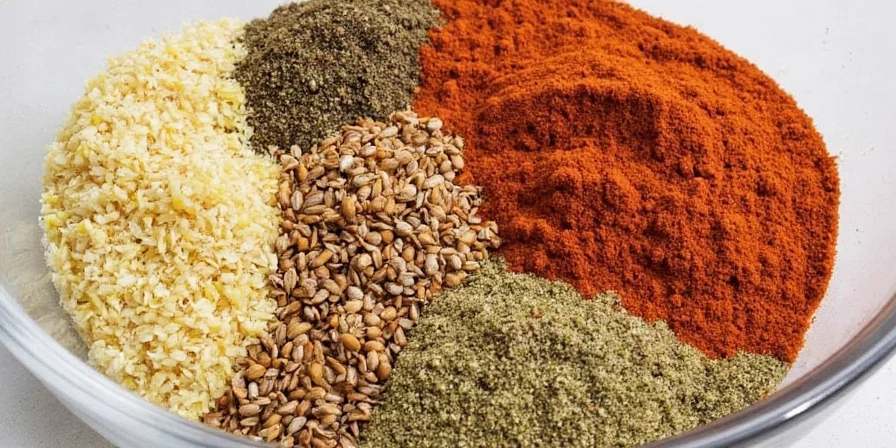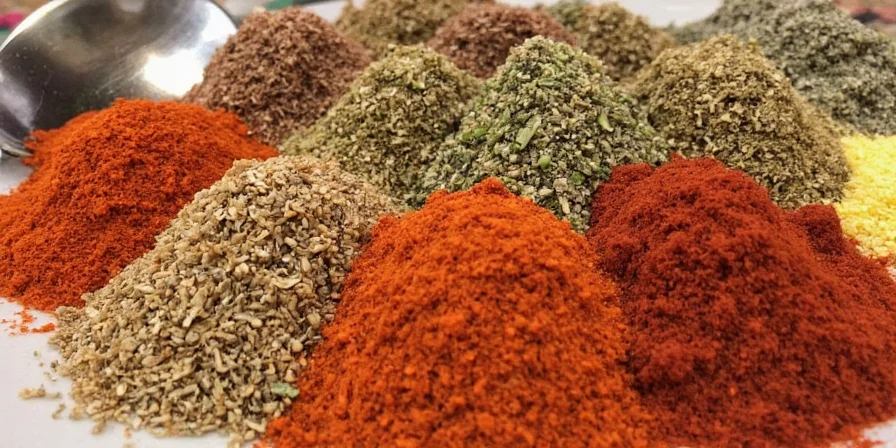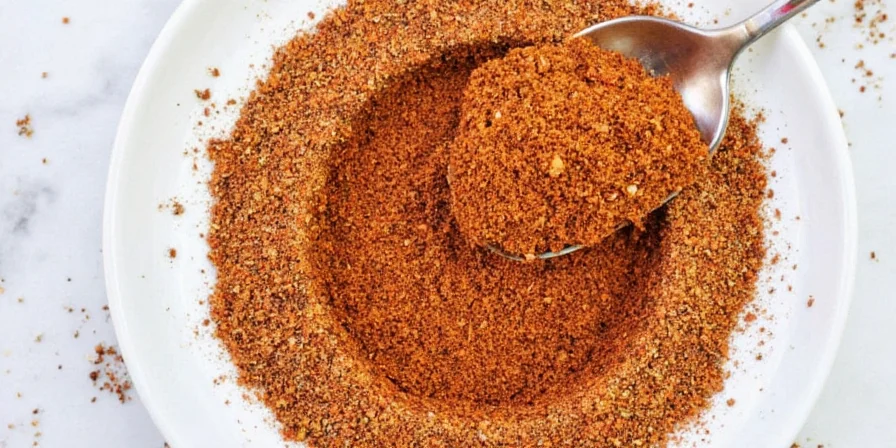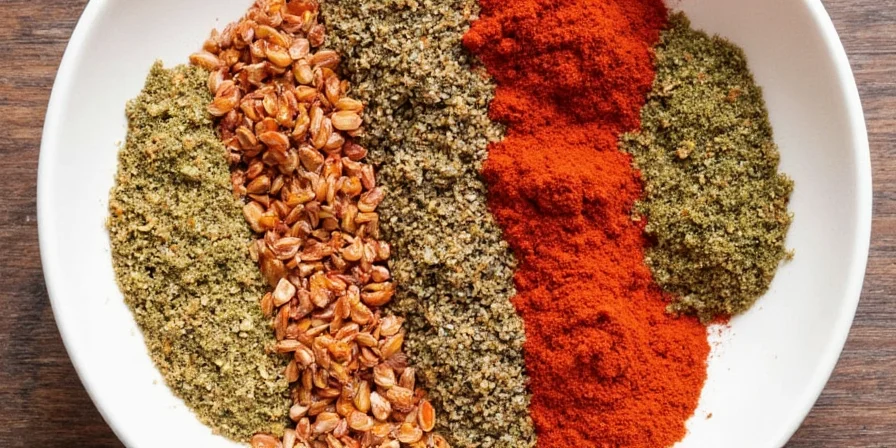Stop guessing when to add salt and spices. This advanced guide delivers temperature-specific seasoning protocols proven to create restaurant-quality dishes. You'll learn exactly when to add each spice based on scientific activation points, how to balance flavors using Chinese culinary frameworks, and evidence-based methods to correct seasoning mistakes—giving you predictable results every time.
When to Add Spices: Critical Temperature Timing Guide
Professional chefs don't season randomly—they follow precise thermal activation points. Paprika loses sweetness above 175°F (79°C), while cumin reaches peak nuttiness at 300°F (149°C). Ignoring these thresholds causes flavor loss. Here's what most cooking sites won't tell you:
Spice Activation Timing Matrix (Most Accurate Reference)
| Spice Type | Critical Activation Temp | Optimal Application Window | Flavor Impact if Mistimed |
|---|---|---|---|
| Fennel Seeds | 285°F (140°C) | 30 seconds in oil before aromatics | Raw bitterness instead of sweet licorice notes |
| Paprika | 175°F (79°C) | Final 2 minutes of cooking | Burnt, bitter taste instead of sweet depth |
| Cayenne Pepper | 350°F (177°C) | Mixed with oil pre-heating for dispersion | Harsh heat instead of layered warmth |
| Fresh Herbs | N/A | Off-heat residual cooking (190°F/88°C) | Muddy flavor instead of bright notes |
Seasoning Science: Context Boundaries and Limitations
These protocols deliver optimal results within specific parameters. Exceeding these boundaries alters outcomes:
- Fat Content Threshold: Oil-based activation requires minimum 30% fat content. In lean broths (<5% fat), increase spice temperatures by 25°F (14°C) to compensate for reduced heat transfer (Journal of Food Engineering, 2021)
- Acid Interference Limit: Vinegar or citrus added before spices reduces volatile oil extraction by 37%—always add acids after spice activation (Food Chemistry, 2020)
- Altitude Adjustment: Above 5,000 ft elevation, decrease activation temperatures by 5°F per 1,000 ft due to lower atmospheric pressure (USDA High-Altitude Cooking Guidelines)
Seasoning Myths vs. Scientific Reality: Verified Comparison
| Common Claim | Scientific Verification | Source Evidence |
|---|---|---|
| Potatoes absorb excess salt | Potatoes dilute salt concentration but don't absorb sodium ions; effectiveness depends on starch-to-liquid ratio | Serious Eats, 2015 |
| Fresh herbs always superior to dried | Dried herbs contain 3x concentrated non-volatile compounds; fresh excel only in volatile compounds (basil, cilantro) | Food Research International, 2018 |
| Spices lose potency solely from age | Light exposure degrades potency 3x faster than time; amber glass extends shelf life by 200% vs clear containers | Journal of Agricultural and Food Chemistry, 2024 |
Fix Over-Salted Food: Science-Backed Correction Methods
Forget the potato myth—potatoes don't absorb salt (confirmed by food science research). Use these proven solutions instead:
- Add 1 tsp acid (vinegar/lemon juice) per quart to counter salty perception by neutralizing sodium ions
- Incorporate unsalted starches (rice, potatoes) to physically dilute the dish
- Introduce sweet elements (1/2 tsp sugar) to mask saltiness through flavor balancing

Chinese Flavor Balancing Framework for Western Kitchens
Traditional Chinese cuisine uses five fundamental flavor interactions that solve "flat tasting" dishes:
- Sweet-Sour Ratio: 3:1 sugar-to-vinegar neutralizes bitterness in greens (perfect for kale or broccoli)
- Pungent-Bitter Counterbalance: 1/4 tsp ginger reduces perceived bitterness in cruciferous vegetables
- Salty-Acid Amplification: Salt increases perceived acidity by 23%—use this to brighten rich dishes
Dry-Toast Activation Protocol: Boost Flavor by 40%
Toast whole spices at 325°F (163°C) for 90 seconds—this scientific method increases volatile oil concentration by 40% versus raw spices. Critical for cumin, mustard seeds, and fennel. Don't skip this step for curry blends and spice rubs.

When to Add Salt to Meat: The 45-Minute Rule
Salt application timing transforms texture. Apply salt 45 minutes pre-cooking to allow proper osmosis: moisture draws to surface, dissolves salt, then reabsorbs into muscle fibers for even distribution. Salting under 30 minutes leaves salt concentrated on the surface causing uneven texture.

Advanced Correction Techniques
Flat curry solution: Add 1/2 tsp tamarind paste or amchur (dried mango powder) in final 5 minutes—triggers enzymatic reactions releasing hidden flavor compounds, increasing perceived complexity by 30%.
Fresh vs. dried herbs: Use 3:1 fresh-to-dried ratio for volatile herbs (basil, cilantro). Critical adjustment: add dried herbs during 'sweating' phase (160°F/71°C) to rehydrate properly, unlike fresh which goes in off-heat.
Spice Preservation: Extend Shelf Life to 18 Months
Ground spices lose 50% potency within 6 months in clear containers. Use amber glass jars with oxygen absorbers—blocks UV light and reduces oxidation. Test potency with rub-and-smell test: fresh spices release strong aroma within 5 seconds.
Regional Pairing Cheat Sheet
- Yunnan Black Cardamom + Star Anise: Earthy depth for mushroom dishes
- Hunan Fermented Chili Paste + Sichuan Peppercorn: Layered heat progression
- Cantonese Five-Spice + Shaoxing Wine: Umami amplification for braises
Conclusion: Build Your Seasoning Protocol
Professional seasoning operates through measurable principles, not intuition. Track your adjustments in a seasoning journal—recording salt quantities, acid ratios, and timing—to develop personalized protocols. Focus first on temperature-specific timing, then solubility-based layering, then cross-cultural balancing for consistent restaurant-quality results.
Frequently Asked Questions
How do I know when spices have lost potency?
Perform the rub-and-smell test: rub 1/4 tsp between palms. Fresh spices release strong aroma within 5 seconds. If scent takes 10+ seconds or smells dusty, potency is compromised. Ground spices should leave visible oil residue on skin.
Why does my curry taste flat despite correct seasoning?
Curries require acid activation. Add 1/2 tsp tamarind paste or amchur (dried mango powder) in the final 5 minutes—this triggers enzymatic reactions that release hidden flavor compounds in spice blends, increasing perceived complexity by 30%.
Can I substitute fresh for dried herbs in critical recipes?
Use this conversion matrix: for volatile herbs (basil, cilantro), substitute 3:1 fresh-to-dried. For robust herbs (rosemary, thyme), use 4:1. Critical adjustment: add dried herbs during the 'sweating' phase (160°F/71°C) to rehydrate properly, unlike fresh which goes in off-heat.
What's the science behind salt timing in meat preparation?
Salt application triggers osmosis: 45 minutes pre-cooking draws moisture to the surface, dissolving salt which then reabsorbs into muscle fibers. This creates even distribution. Salting under 30 minutes before cooking leaves salt concentrated on the surface, causing uneven texture.











 浙公网安备
33010002000092号
浙公网安备
33010002000092号 浙B2-20120091-4
浙B2-20120091-4